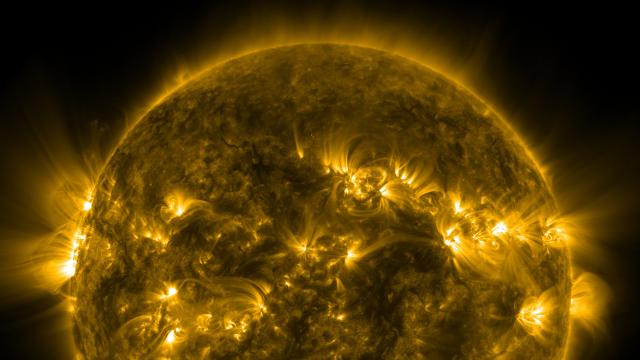No matter where you look today, information technologies are omnipresent in our daily lives. They help us communicating with our friends, paying via credit card in the supermarket or booking flights over the internet. All these techniques are, for sure, highly useful tools to make our everyday life more convenient, but this also leads to the fact that we are highly dependent and maybe can’t do basic tasks without them. So the question is what exactly would force our system of different technologies to collapse? One answer might be for sure a war, but a more hidden threat, which can and will strike us one day is a Coronal mass ejection.
Coronal mass ejections or CMEs are huge explosions of magnetic field and plasma from the Sun’s corona. When CMEs impact the Earth’s magnetosphere, they are responsible for geomagnetic storms and enhanced aurora. The energy of these CMEs have also the potential to damage the circuitry of satellites, power grids and all sorts of electronic devices, which we use in our daily lives.
For now let’s think of a world where this scenario takes place and for the sake of simplicity just satellites stop working. Such a dysfunction of satellites would affect, for instance, telephones, navigation systems and the global finance industry. To focus on Navigation Airplanes or ships wouldn’t be able navigate in a proper way anymore because their navigation is based on location information gathered from GPS technology which stops working when satellites fail. This in reverse would affect the way goods like food or raw materials are transported.
The point is, humans are, as mentioned before, highly dependent on all these technologies and these technologies are influencing the way we are using data and information. Our worldwide network of information systems became so crucial for our daily tasks, that such an unfavorable event would force us to dramatically rethink all commonplace activities in our personal lives and all processes of companies such as supply chains of food and the transport of other resources.
The pending questions now are: Is such an event likely? And what can we do to prevent our information infrastructure from such an natural phenomenon?
Firstly, the good thing about this phenomenon is that “the probability of a massive CME directly hitting Earth is pretty low[…]” as Dr. Newmark, a Solar Physics Scientist in NASA’s Heliophysics Division, says, but nevertheless if such a big CME would hit the earth the impact would be dramatically high and therefore humanity has to come up with feasible approaches to secure our essential information systems network.
One possible solution facing this problem might be the exact forecasting of CMEs in the future and preventing power grids and satellites to be caught off guard by turning them off at the exact right time.
But as Nils Bohr (Nobel laureate) once said “Prediction is very difficult, especially if it’s about the future”. So the threat of this natural phenomenon will stay inherent in our daily lives and in the meanwhile can’t do anything about it, if such an event takes place.
References:
http://www.ecology.com/2014/05/01/earths-greatest-threat-cmes/
https://www.nasa.gov/mission_pages/sunearth/news/flare-impacts.html#.V-OmAvmLSUl
https://science.nasa.gov/science-news/science-at-nasa/2010/26oct_solarshield
http://www.ucsusa.org/nuclear-weapons/space-weapons/what-are-satellites-used-for#.V-OnPvmLSUl

